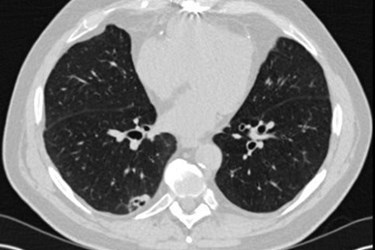Is CT Screening For Lung Cancer Cost-Effective?
By Chuck Seegert, Ph.D.

Data from The National Lung Screening Trial (NLST) shows that computerized tomography (CT) scans reduce lung cancer mortality by 20 percent when compared to chest X-rays. New analysis of the data suggests that this may also make financial sense.
Screening patients for lung cancer was historically done with chest X-rays, a relatively low-cost diagnostic method. These X-rays are taken through the chest and cause all the structures in the chest to be overlaid in a final 2D image. While there are many uses for chest X-rays, the NLST, a major study performed four years ago, showed that X-rays were entirely ineffective at screening for cancer, according to a recent press release from Brown University.
In addition to demonstrating that X-rays were ineffective, the NLST showed a reduction in mortality rates of about 20 percent when low-dose, helical CT scans were used instead. Finding out if regularly performing CT scans, which are much more costly than X-rays, makes sense for the healthcare system was the goal of the new analysis by Brown University epidemiologists, according to the press release.
In today’s healthcare environment, questions like these are important because the cost of performing regular CT scans on patients may not benefit the system as a whole.
“Cost is becoming more and more important, and if you fund one thing, there are other things you won’t be able to fund,” said Ilana Gareen, assistant professor of epidemiology in Brown University’s School of Public Health, in the press release.
Screening with low-dose CT costs about $1,631 per person, according to a study published by the team in the New England Journal of Medicine. The incremental cost effectiveness ratios (ICERs) were calculated based on a number of assumptions and resulted in ICERs of $52,000 per life-year gained and $81,000 per quality adjusted life year (QALY) gained. QALYs include an adjustment for living in good health compared to surviving with major health problems, according to the press release.
ICERs are a sophisticated measure, but a rule of thumb is that anything below $100,000 should be considered cost-effective. While these results are promising, the calculations are based on many assumptions that significantly impact the results. With this in mind, a primary conclusion from the study is that financial success of such a screening program will depend on how it is implemented.
While imaging lung cancer with CT scans is more effective than using X-rays, research is ongoing to improve CT scans even more. Recently, in an article published on Med Device Online, imaging software to help improve detection of lung nodules was discussed.
Image Credit: Brown University
